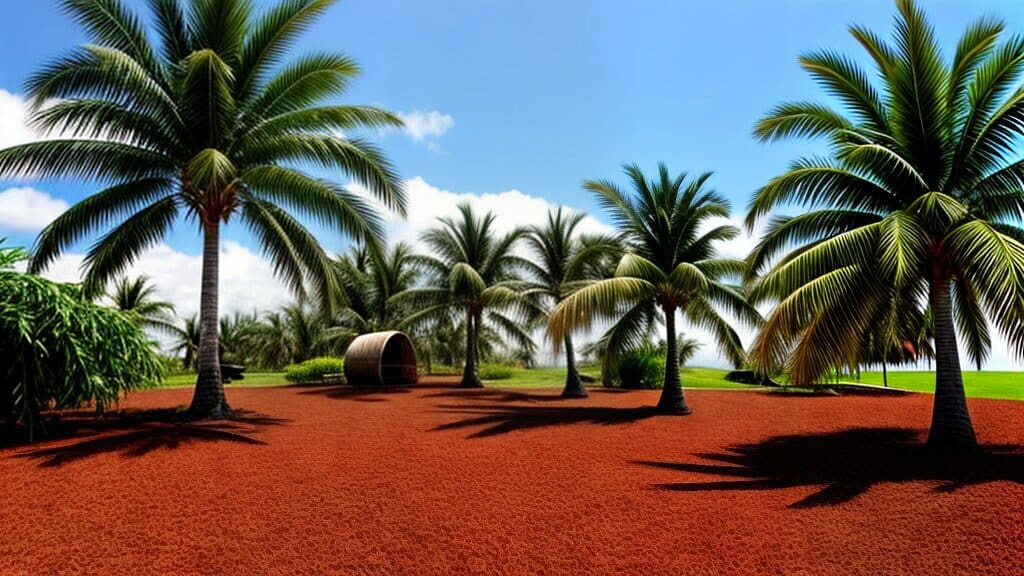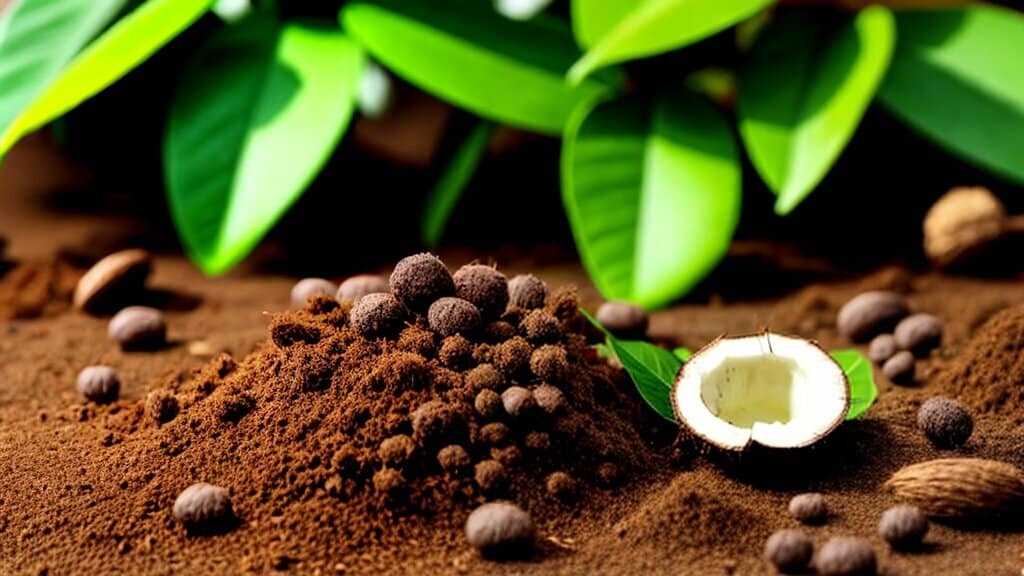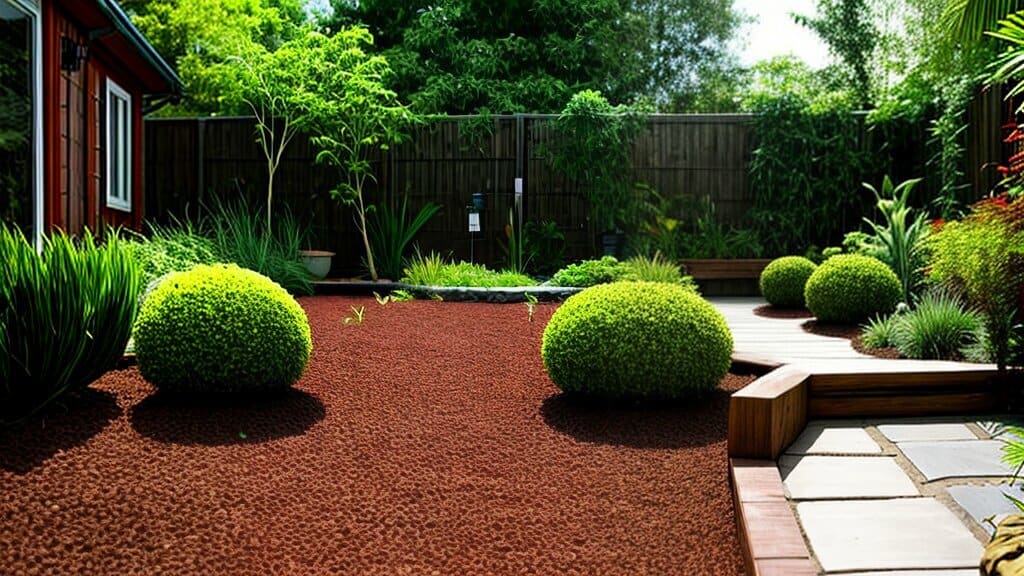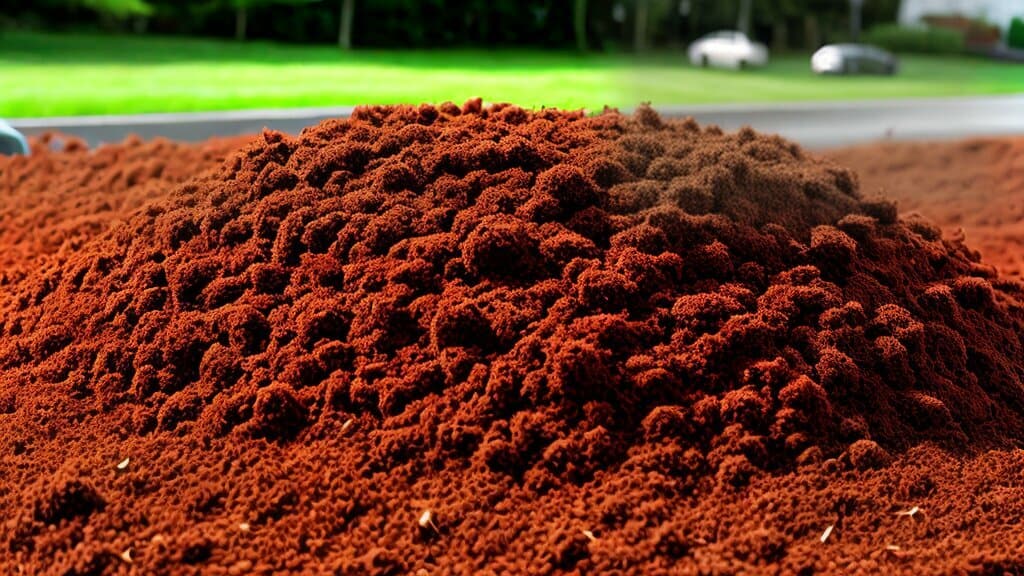If you are considering the use of coco coir for your gardening or landscaping projects, it’s important to understand how long this versatile material can last. Coco coir, which is made from the fibrous husks of coconuts, offers many benefits over traditional materials, such as improved water retention, increased aeration, and renewable sourcing. But how long can you expect it to last before needing to be replaced?
The lifespan of coco coir can vary depending on various factors, such as exposure to sunlight, moisture levels, and microbial activity. In this article, we’ll explore the durability and breakdown of coco coir, as well as provide tips for maximizing its longevity.
Key Takeaways
- Coco coir is a versatile material made from the fibrous husks of coconuts that offers many benefits over traditional materials.
- The lifespan of coco coir can vary depending on factors such as exposure to sunlight, moisture levels, and microbial activity.
- Understanding the durability and breakdown of coco coir can help you maximize its longevity and environmental benefits.
Understanding Coco Coir
Coco coir, also known as coco peat or coir fiber, is a natural byproduct of coconut processing. It is derived from the fibrous material found between the hard, internal shell and the outer husk of the coconut. Coco coir has become increasingly popular as an eco-friendly alternative to peat moss in gardening and horticultural applications due to its sustainable sourcing and ability to retain moisture.
The composition of coco coir varies depending on the method of processing, but it typically consists of cellulose, lignin, and pectin. It is available in different forms such as blocks, compressed bricks, loose fibers, and pellets.
Coco coir has numerous uses beyond gardening, including hydroponic systems, erosion control, and as a substitute for traditional building materials such as bricks and insulation. Its versatility and durability make it a popular choice for eco-conscious consumers.

Factors Affecting Coco Coir Lifespan
Coco coir is a durable and long-lasting material, but there are several factors that can influence its lifespan. One of the main factors is exposure to sunlight. Coco coir that is exposed to direct sunlight for prolonged periods will degrade faster than coco coir that is kept out of the sun. This is because ultraviolet light breaks down the lignin in the coir, causing it to become brittle and break apart.
Moisture levels are another key factor that can impact the longevity of coco coir. When coir is kept too wet, it can become a breeding ground for microbial activity, which can break down the fibers and cause the product to degrade more quickly.
Temperature can also play a role in the degradation of coco coir. High temperatures can cause the lignin in the coir to break down more rapidly, further reducing the material’s durability.
Finally, the quality of the coco coir can also influence its lifespan. Higher quality coco coir will generally last longer than lower quality options, as it is less likely to break down or become damaged over time.

Understanding these factors can help you take steps to prolong the lifespan of your coco coir. Keeping it out of direct sunlight, maintaining proper moisture levels, and storing it in a cool, dry place are all key steps you can take to extend the life of your coco coir. Additionally, investing in high-quality coco coir can pay off in the long run by providing you with a more durable and long-lasting product.
Shelf Life of Coco Coir
When stored properly, coco coir can have a shelf life of up to three years. However, the exact longevity of coco coir depends on various factors, including its form and storage conditions.
Coco coir comes in different forms, such as blocks, mats, and loose fibers, each with its own shelf life. Blocks of coco coir typically have the longest shelf life, lasting up to three years. Mats and loose fibers have a shorter shelf life, typically lasting between 6 months to a year.
To extend the lifespan of coco coir, it is important to store it in a dry, cool place away from direct sunlight. Excessive exposure to sunlight and moisture can cause coco coir to break down and degrade quicker than its expected shelf life.
It is also important to avoid storing coco coir in an airtight container, as this can lead to the growth of harmful bacteria and mold. Instead, store coco coir in a breathable fabric bag or container that allows air to circulate.

Regularly checking and maintaining stored coco coir can also help to maximize its longevity. Check for signs of moisture or mold, and remove any damaged or degraded parts.
By storing and maintaining coco coir properly, it can remain durable and usable for longer periods, reducing waste and saving money in the long run.
Durability of Coco Coir
Coco coir is known for its durability, making it a popular choice for various applications. Despite being a natural and biodegradable material, it can maintain its structural integrity even under heavy use or exposure to moisture.
One of the reasons for its durability is its high lignin content. Lignin is a complex organic polymer that provides structural support and makes coco coir resistant to decay.
In addition to its inherent durability, coco coir can also be treated to enhance its resistance to microbial activity and extend its lifespan. Treatment methods include pasteurization and chemical stabilization.
When using coco coir for gardening or hydroponics, it can last for several growing seasons with proper maintenance and regular flushing to prevent salt buildup. In landscaping, coco coir can last for several years before needing to be replaced.
Overall, the durability of coco coir makes it a cost-effective and sustainable alternative to traditional materials in various applications.

Decomposition of Coco Coir
One of the key factors that affect the lifespan of coco coir is its natural decomposition process. Over time, coco coir breaks down due to environmental factors, such as exposure to sunlight, moisture levels, and microbial activity.
Despite its finite lifespan, coco coir can still be a sustainable option due to its biodegradability and positive contribution to soil health. As it breaks down, coco coir releases nutrients into the soil, improving its quality and fertility. This makes it an ideal choice for gardeners and farmers looking for a natural, organic alternative to traditional soil amendments.
Coco coir decomposition is also beneficial for the environment, as it reduces waste and promotes sustainable practices. However, it’s important to properly dispose of coco coir once it reaches the end of its lifespan. Recycling, composting, and responsible waste management are all viable options for reducing environmental impact.
Ultimately, understanding the decomposition of coco coir is important for maximizing its lifespan and minimizing waste. By taking steps to properly maintain and dispose of coco coir, individuals can make a positive impact on both their gardens and the environment.

Tips for Maximizing Coco Coir Longevity
Proper maintenance and handling of coco coir can significantly extend its lifespan and durability. Here are some tips to help you get the most out of your coco coir:
- Store it in a cool, dry place: Moisture is one of the biggest factors contributing to coco coir breakdown. Keep it in a dry, well-ventilated area away from direct sunlight.
- Keep it clean: Remove any debris or foreign objects that may have gotten into the coco coir, which can cause damage over time.
- Rehydrate it properly: When rehydrating coco coir, make sure to use the correct water-to-coco-coir ratio to avoid over-saturation. Follow the manufacturer’s instructions carefully.
- Avoid using harsh chemicals: Strong chemicals can break down the natural fibers in coco coir, causing it to deteriorate more quickly. Use gentle, organic fertilizers instead.
- Rotate regularly: If you use coco coir as a growing medium, consider rotating it out periodically to give it a chance to dry out and recover its structural integrity.
- Choose high-quality coco coir: Not all coco coir is created equal. Look for brands that use high-quality, properly processed coco coir to ensure maximum durability and longevity.
By following these simple tips, you can help ensure that your coco coir lasts as long as possible, providing you with a cost-effective and sustainable solution for a range of applications.

Applications of Coco Coir
Coco coir is a versatile material with a variety of applications. Its popularity has grown due to its impressive durability and ability to retain moisture, making it a favorite among gardeners, landscapers, and hydroponic enthusiasts. Here are some of the most popular applications of coco coir:
- Gardening: Coco coir is often used as a soil amendment to improve drainage and aeration. It provides a neutral PH, making it a great alternative to peat moss. It can also be used as a hydroponic growing medium. Coco coir is available in compressed blocks, ready to hydrate and use in potting mixes.
- Landscaping: Coco coir is excellent for erosion control and as a soil stabilizer. It can be used in erosion control blankets, which support vegetation growth while protecting the soil from erosion.
- Hydroponics: The excellent water retention properties of coco coir make it an ideal medium for hydroponics. It is also a sustainable alternative to peat moss and rockwool.
Additionally, coco coir is a sustainable alternative to traditional materials such as peat moss, which is often harvested from non-renewable sources. Coco coir is a renewable resource and has a lower carbon footprint than many other growing mediums.

Environmental Benefits of Coco Coir
Coco coir is not only a durable and versatile material, but it also offers significant environmental benefits. As a renewable resource, coco coir is sourced from the natural fibers of coconut husks, which would otherwise go to waste. This makes it a sustainable alternative to traditional materials, such as peat moss.
The biodegradability of coco coir also means that it does not contribute to landfill waste when disposed of properly. In fact, it can be composted and used as a soil amendment, helping to improve soil structure and fertility. This is particularly important as soil degradation and erosion are significant environmental issues.
Furthermore, the use of coco coir can help to reduce the environmental impact of certain industries, particularly agriculture. By using coco coir as a growing medium or soil amendment, farmers and gardeners can reduce their reliance on chemical fertilizers and pesticides, which can have negative effects on soil health and water quality.
Overall, the use of coco coir offers a variety of environmental benefits, making it an attractive option for those looking to reduce their ecological footprint while still achieving high-quality results.

Tips for Maximizing Coco Coir Longevity
Coco coir is a versatile and durable material, but its lifespan can be influenced by various factors. Follow these tips to maximize the longevity of your coco coir:
- Store coco coir properly: Keep coco coir in a cool, dry place away from direct sunlight. This will help prevent moisture buildup and minimize the risk of mold or microbial activity.
- Handle coco coir with care: Avoid compressing or compacting coco coir, as this can reduce its aeration and water-holding capacity. Use a light touch when handling coco coir to maintain its structure and ensure optimal performance.
- Maintain coco coir regularly: Periodically fluff and aerate coco coir to prevent compaction and encourage root growth. This can be done by hand or with a specialized tool, depending on the application.
- Avoid over-watering: Excess water can cause coco coir to break down and degrade faster. Follow recommended watering guidelines for your specific application and monitor moisture levels regularly.
- Choose high-quality coco coir: Invest in coco coir from reputable suppliers to ensure quality and consistency. Lower-quality coco coir may have a shorter lifespan and be more prone to degradation.
By following these tips, you can extend the lifespan of your coco coir and get the most out of this sustainable and versatile material.

Conclusion
In conclusion, knowing the lifespan and durability of coco coir is essential for anyone who uses it in their projects. Factors such as exposure to sunlight, moisture levels, and microbial activity can influence the lifespan of coco coir, but it can maintain its structural integrity even under heavy use or exposure to moisture. Proper storage and maintenance can help maximize coco coir longevity and shelf life, and it can be responsibly disposed of through recycling options, composting, and responsible waste management practices.
Coco coir’s versatility and durability make it a popular choice for gardening, hydroponics, and landscaping projects. It is also a sustainable alternative to traditional materials, with biodegradability and renewable sourcing. When it reaches the end of its lifespan, proper disposal methods can minimize environmental impact.
Final Recommendation
If you’re considering using coco coir for your next project, make sure to take into account its lifespan and durability, and follow proper storage and maintenance practices. With its many benefits and applications, coco coir can be a valuable addition to your sustainable and eco-friendly toolkit.
FAQ
Q: How long does coco coir last?
A: The lifespan of coco coir can vary depending on various factors, but it is known for its durability and longevity.
Q: What is coco coir?
A: Coco coir is a natural fiber derived from the husk of coconuts. It is widely used in gardening, hydroponics, and landscaping due to its excellent water retention and nutrient absorption properties.
Q: What factors can affect the lifespan of coco coir?
A: Factors such as exposure to sunlight, moisture levels, and microbial activity can influence the degradation and breakdown of coco coir over time.
Q: What is the shelf life of coco coir?
A: Coco coir, when stored properly, can have a shelf life of several years. The different forms of coco coir available, such as blocks, pellets, or mats, may have different shelf lives.
Q: Is coco coir durable?
A: Yes, coco coir is known for its durability. It can maintain its structural integrity even under heavy use or exposure to moisture.
Q: How does coco coir decompose?
A: Coco coir naturally decomposes over time, contributing to soil health. Its decomposition process is environmentally friendly and helps improve the fertility of the soil.
Q: How can I maximize the longevity of coco coir?
A: To maximize the lifespan of coco coir, it is important to store it properly, handle it with care, perform regular maintenance, and avoid common mistakes that may shorten its durability.
Q: What are the applications of coco coir?
A: Coco coir has various applications, including gardening, hydroponics, landscaping, and as a sustainable alternative to traditional materials.
Q: What are the environmental benefits of using coco coir?
A: Coco coir offers environmental benefits such as biodegradability, renewable sourcing, and improved soil health. It is a sustainable option that minimizes environmental impact.
Q: How should I dispose of coco coir properly?
A: When coco coir reaches the end of its lifespan, it can be responsibly disposed of through recycling options, composting, or following proper waste management practices.
